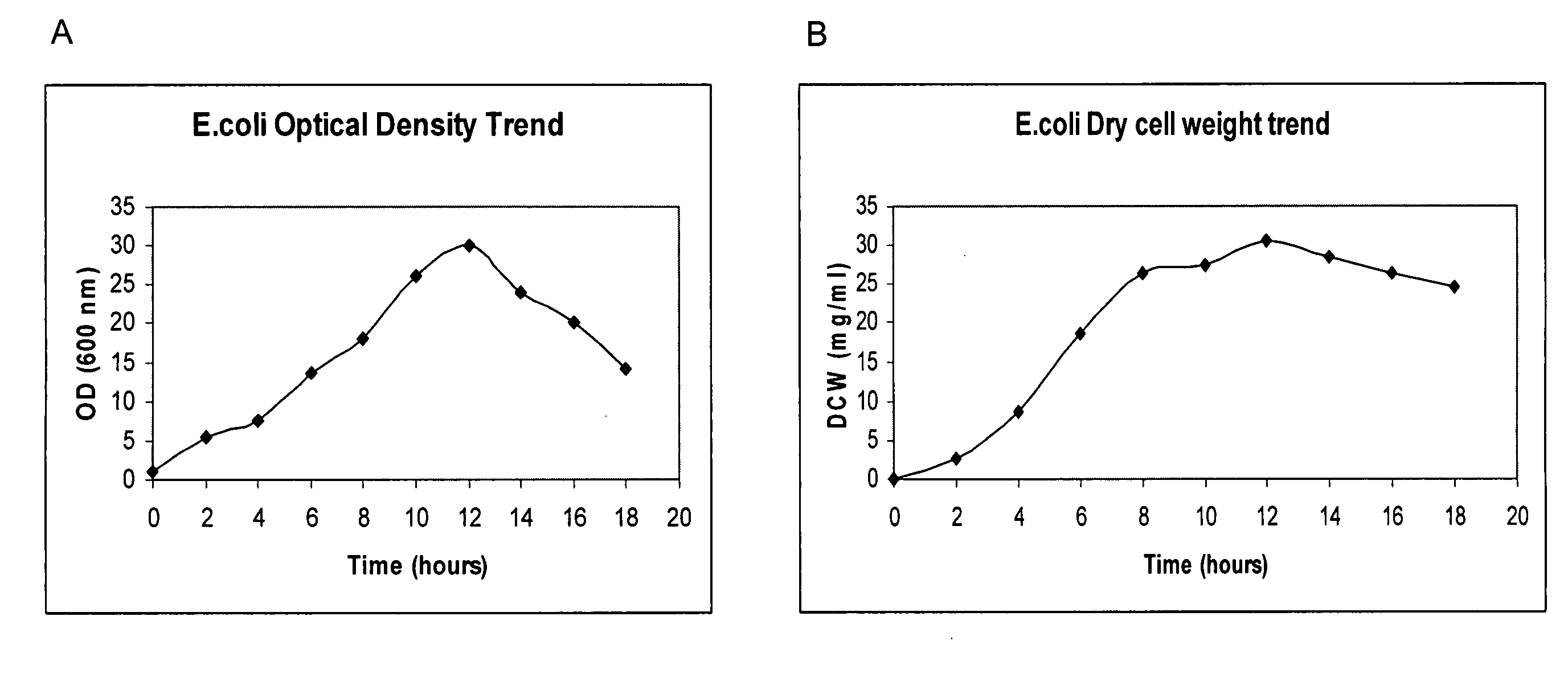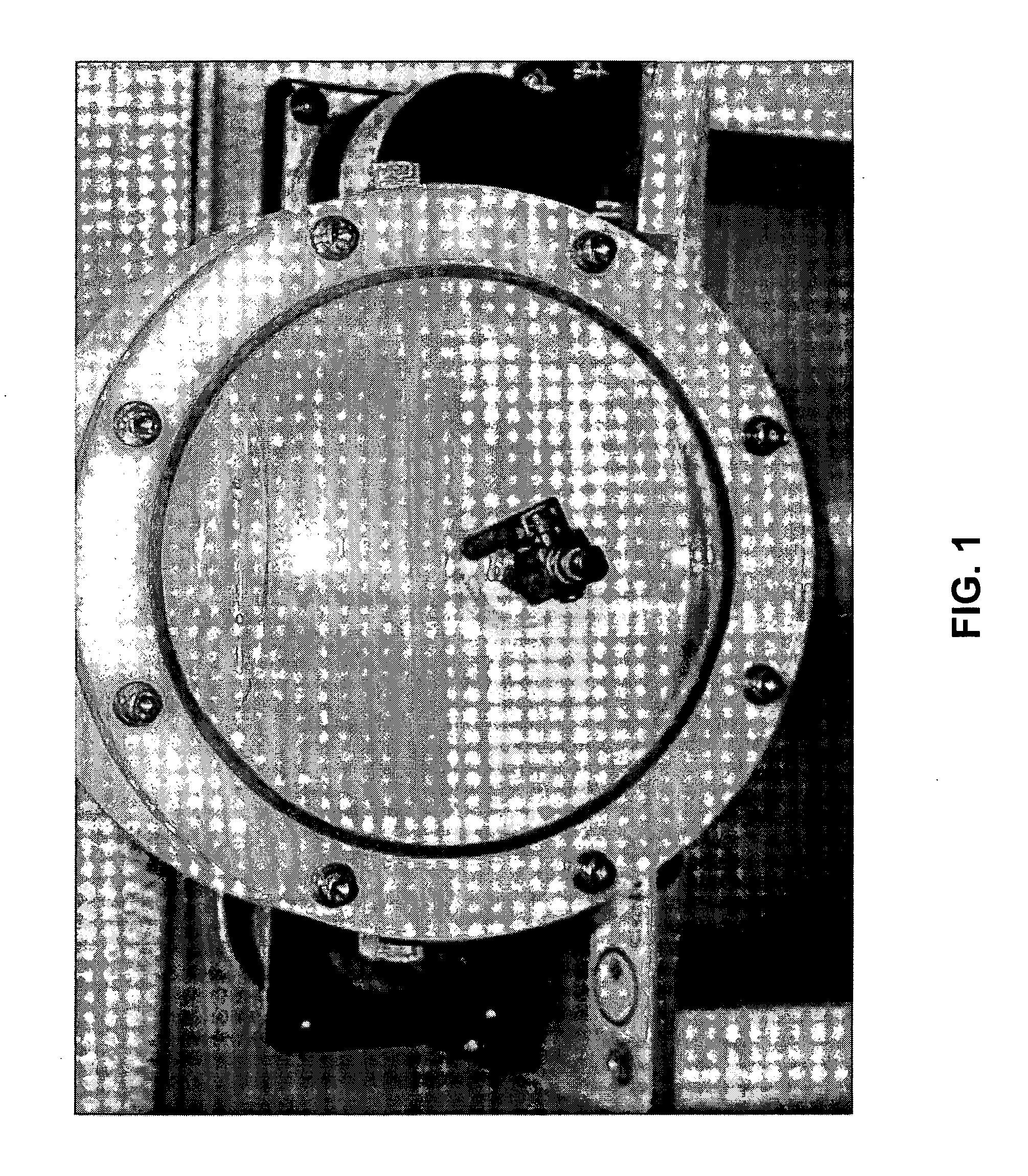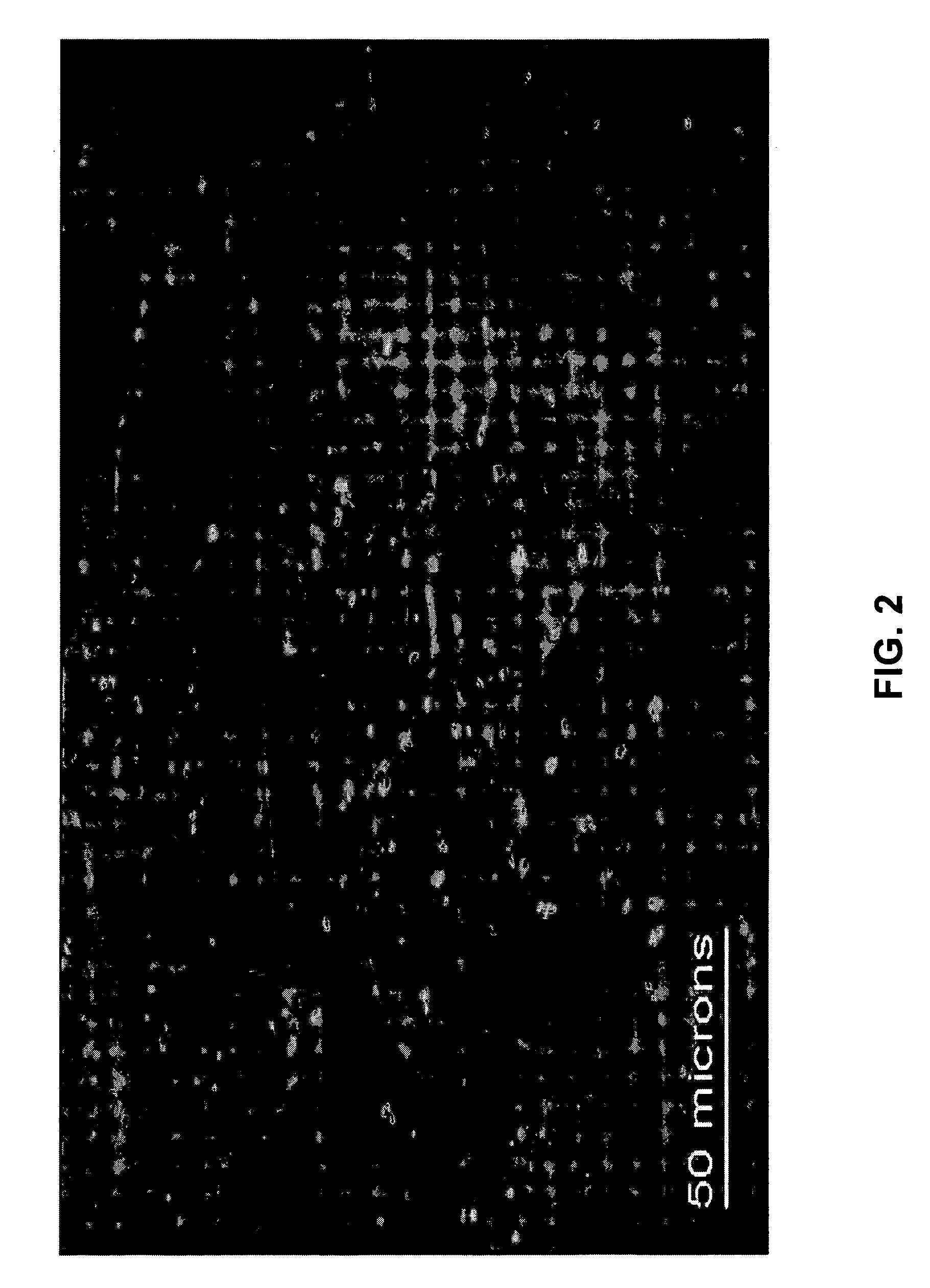Microgravity bioreactor systems for production of bioactive compounds and biological macromolecules
- Summary
- Abstract
- Description
- Claims
- Application Information
AI Technical Summary
Benefits of technology
Problems solved by technology
Method used
Image
Examples
example 1
Operation of the Hydrofocusing Bioreactor (HFB)
[0116]The HFB is an enabling technology for three-dimensional cell culture and tissue engineering investigations both in laboratories on Earth and on orbiting spacecraft. The HFB used in establishing Periwinkle cell suspension cultures contains a rotating, dome-shaped cell culture chamber with a centrally located sampling port and an internal viscous spinner (see FIG. 1). The chamber and spinner can rotate at different speeds in either the same or opposite directions. Rotation of the chamber and viscous interaction at the spinner generate a hydrofocusing force. Adjusting the differential rotation rate between the chamber and spinner controls the magnitude of the force. The HFB is equipped with a membrane for diffusion gas exchange to optimize gas / oxygen supply. Under the microgravity conditions of the HFB, at any given time, gravitational vectors are randomized and the shear stress exerted by the fluid on the synchronously moving partic...
example 2
Establishing Periwinkle Cell HFB Cultures
[0118]In order to establish a continuous Periwinkle cell culture within the HFB, cell lines capable of optimal growth were selected. The Catharanthus roseus G. Don cell cultures that were used as the inoculum in the HFB were generated from stem and leaf callus. Fresh cells (10 g) were maintained in 100 mL of MS medium (Linsmaier, E. M., and Skoog, F., Physiol Plant 18:100-127 (1962)) supplemented with α-naphthalene acetic acid (1 mg / L), indole acetic acid (1 mg / L), kinetin (0.5 mg / L) and sucrose (40 g / L) in a 250-ml flask on a rotary shaker (120 RPM) at 25° C. in the dark.
[0119]To establish cell lines capable of optimal growth, cells were selected from shake-flask cultures called compact callus clusters measuring 5 to 8 mm in diameter showing some tissue differentiation. The compact callus clusters were then maintained in MS medium containing 2,4-Dichlorophenoxyacetic acid (2,4-D) (1 mg / L), which resulted in the high yielding PW-1 cell line. ...
example 3
Osmotic Induction of Periwinkle Alkaloid Production
[0124]For the osmotic shock treatment of Periwinkle cells, 5%, 7%, 10% and 15% (w / v) mannitol was prepared in the growth medium. All of the mannitol preparations were adjusted to pH 5.8 before being autoclaved. Seven day-old PW-1 cell cultures were allowed to settle down, and 100 mL of spent medium was removed and replaced with 100 mL of the prepared media containing different concentrations of mannitol. Seven day-old three-dimensional tissues cultured in the HFB were treated by addition of varying mannitol concentrations. The control cell suspensions received the same volume of maintenance medium only. Alkaloid determination was carried out with PW-1 cells due to their faster doubling rate and their ability to withstand induction treatment without significant cell death. PW-1 cells were collected at intervals of 4 days within a 20 day culture cycle. Table 2 shows significant production of alkaloids (ajmalicine and catharanthine and...
PUM
| Property | Measurement | Unit |
|---|---|---|
| Time | aaaaa | aaaaa |
| Time | aaaaa | aaaaa |
| Time | aaaaa | aaaaa |
Abstract
Description
Claims
Application Information
 Login to View More
Login to View More - R&D
- Intellectual Property
- Life Sciences
- Materials
- Tech Scout
- Unparalleled Data Quality
- Higher Quality Content
- 60% Fewer Hallucinations
Browse by: Latest US Patents, China's latest patents, Technical Efficacy Thesaurus, Application Domain, Technology Topic, Popular Technical Reports.
© 2025 PatSnap. All rights reserved.Legal|Privacy policy|Modern Slavery Act Transparency Statement|Sitemap|About US| Contact US: help@patsnap.com



